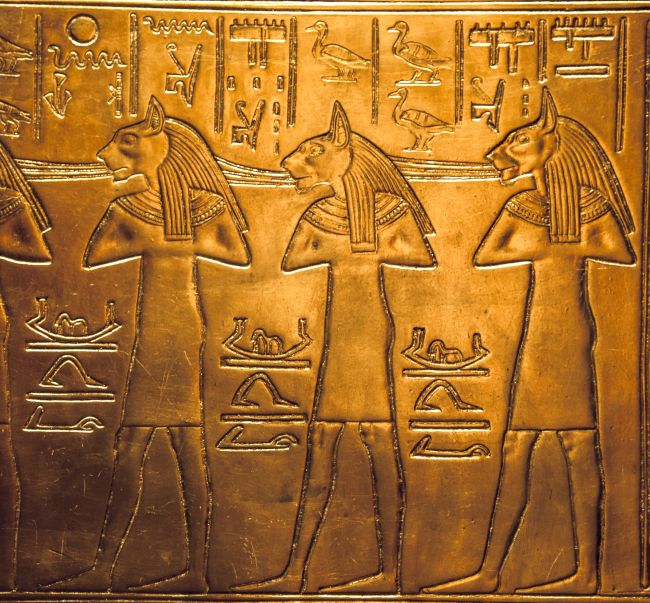 Felines have possessed an alluring mystery that has captivated humans for thousands of years. One of the oldest cultures to have first domesticated cats, and regarded them as having a prestigious role in society, were the ancient Egyptians. Once wildcats that roamed the Middle Eastern deserts, these elusive felines are believed to have been brought into human homes in the Fertile Crescent some 10,000 years ago. They were first used as house pets and pest hunters, able to kill mice, rats, lizards and the deadly cobra.
Felines have possessed an alluring mystery that has captivated humans for thousands of years. One of the oldest cultures to have first domesticated cats, and regarded them as having a prestigious role in society, were the ancient Egyptians. Once wildcats that roamed the Middle Eastern deserts, these elusive felines are believed to have been brought into human homes in the Fertile Crescent some 10,000 years ago. They were first used as house pets and pest hunters, able to kill mice, rats, lizards and the deadly cobra.
Lifestyle and Religious Practices
The ancient Egyptians worshiped a goddess named Mafdet who was a strong woman with the head of a lion. Over time Mafdet morphed into Bast (or Bastet), the cat goddess of motherhood and fertility. Felines were regarded with such vital importance in the lifestyle of Egyptians, that if someone killed a cat (even if by accident) it was considered a crime punishable by death. One account written by the historian Diodorus Siculus describe an event in 60 BC, where a Roman man killed an Egyptian cat accidentally. Though these actions were opposed by the pharaoh Ptolemy XII, the Roman offender was brutally murdered by a furious mob who had witnessed the cat’s death.
Though the Egyptians worshiped cats, they also viewed their domestic pets as cherished family members. Herodotus, the Greek historian, wrote that if there was a fire, men would stand watch nearby to ensure that no cat was harmed by the blaze. Similarly, when a household cat would die, the family would mourn the loss as they would a loved one. Herodotus notes that as a sign of mourning their deceased cat, the family would shave their eyebrows to show their loss.
The ancient Egyptian burial method of embalming and mummification was a lengthy and expensive process mostly reserved for humans of the upper class. However, cats were so highly revered that they often received the same honorable burial rites as a worship to the goddess Bastet. A tomb discovered in 1888 at the temple of Bastet, where thousands of sacred felines once dwelled and were cared for by priestesses, there was found a collection of mummified cats and kittens dating back to around 1000 BC. The temple tomb contained a total of nearly 80,000 cat mummies. Another recent find at the same temple of Bastet, was a wall of compressed cat mummies extending over 60 meters long.
Because of this culture, cats continue lived eternally through the depiction of hieroglyphics, etched on ancient Egyptian walls. In the numerous carved images, the cats would be adorned with jewelry, necklaces and ankle bracelets. Cats will long be associated in Egyptian culture as welcome guests in Pharaoh’s throne room, to the pest-guards at royal granaries, and beloved members of civilian homes.
Egyptian Cats Today

Though the range of domestic cat breeds seem a far cry from the cats worshiped in ancient Egypt, there are those that still bear a resemblance to those sleek deities. The Egyptian Mau is an exotic beauty originating in the North African Nile country. And the Abyssinian, which hails from neighboring Ethiopia is anatomically reminiscent of many of the cats pictured in ancient hieroglyphics.

